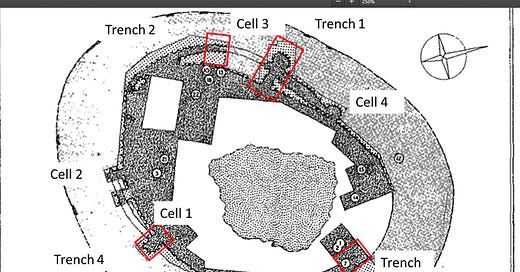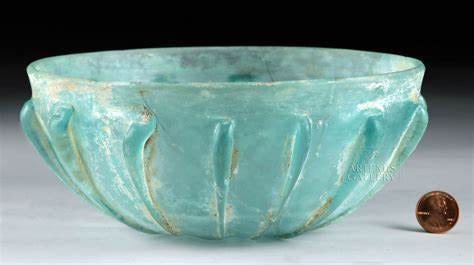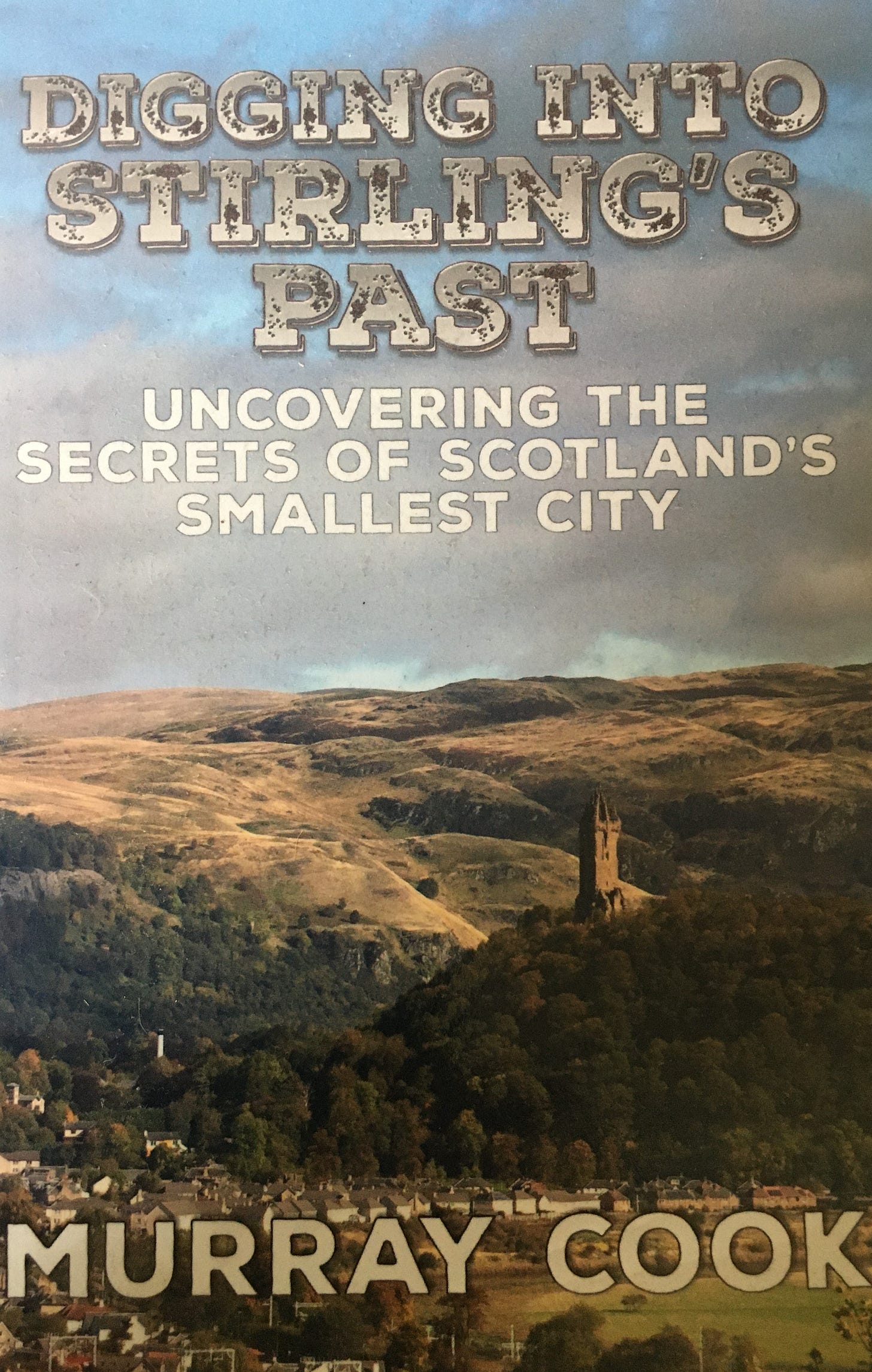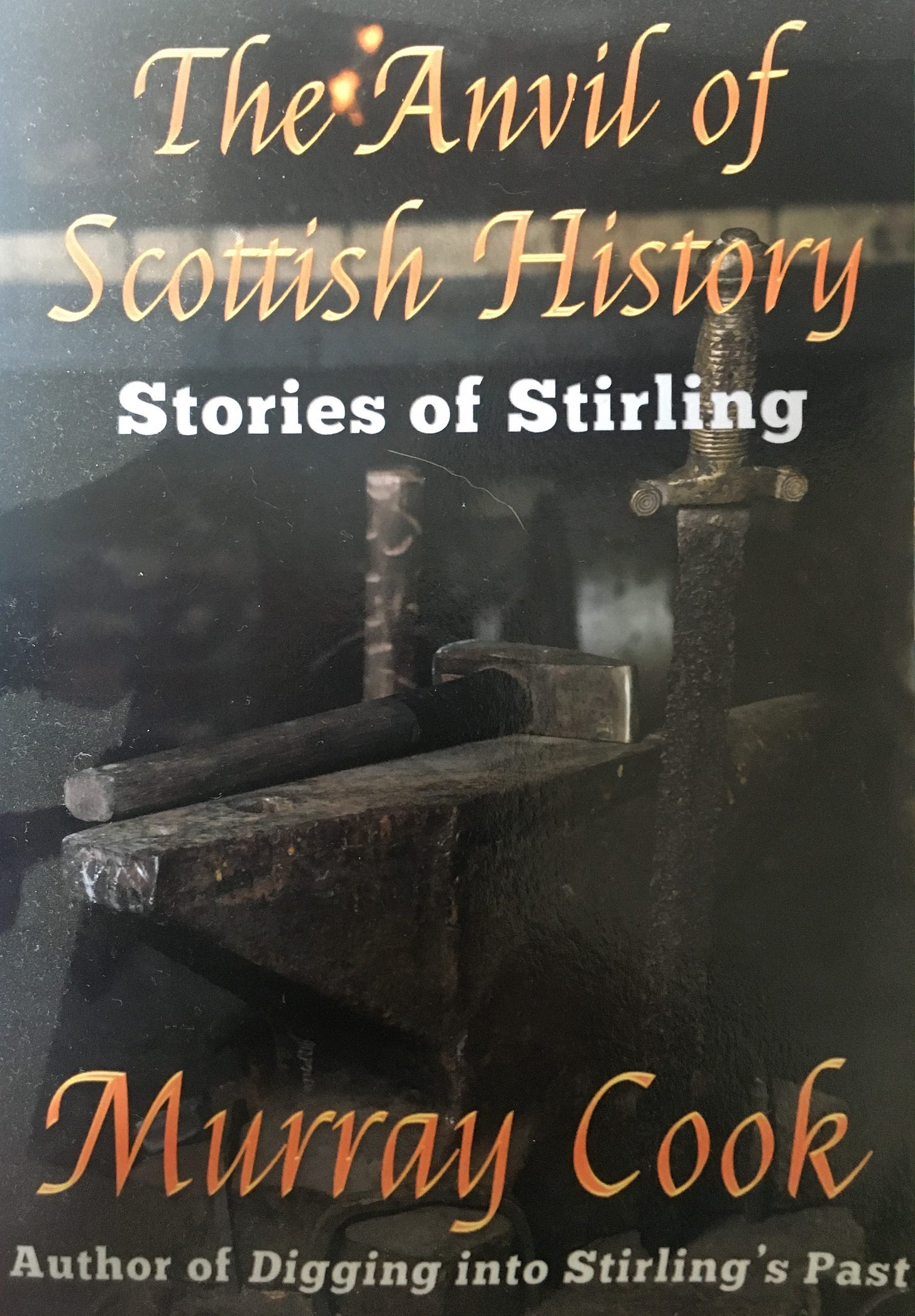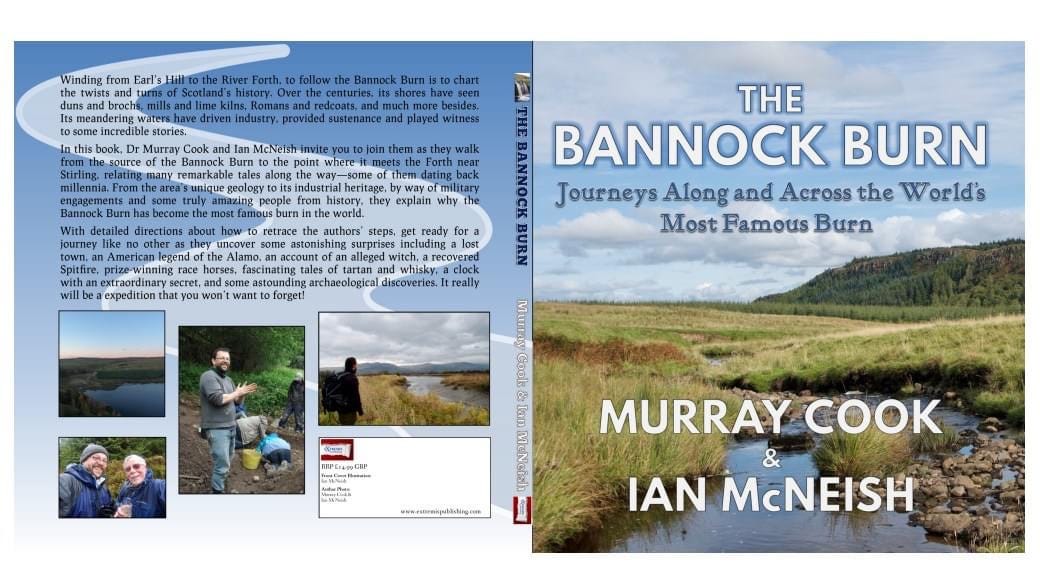Walking on broken glass.....
Welcome to Stirling Archaeology’s regular piece of Friday research, the second of two weekly blogs compiled by Dr Murray Cook. The Monday newsletter summarises of all the interesting history and archaeological things happening round Stirling and the Friday one presents research. Both are generally free but if you like what I do and want to help please consider becoming a paid subscriber it all helps and is greatly appreciated. Regardless we hope you enjoy the blogs and perhaps you’ll come along to a dig sometime!
You will remember that the other week I wrote of my research on an older excavation from the 50s that I was trying to squeeze the very last drips from? This week I’m going to do the same on a site to the immediate south of Gillies Hill: Castlehill Wood Dun. Now this is great place to visit but watch out for the red flag, the place is an active MOD training base. The excavation and initial report were written in the context of World War Two, great armies moving across Europe and terrified refugees fleeing for safety, this influenced the report and the structure was dismissed as temporary and low status, built between the two great waives of Roman invasion in the first and second centuries AD. In part this view derived from the fragments of Roman glass in the structure.
As I hope to publish I think this is all wrong, the structure is complex, roofed and high status, it reflect architectural trends from across Scotland and is a very interesting and unique survivor.
Anyway to return to the glass which was photographed and reanalysed by the National Museums of Scotland.
The report by Leanne Demay, Fraser Hunter and Gemma Cruickshanks says….(drum roll!)
Glass
Three sherds of Roman vessel glass (X.HH 582-4) were recovered by Feachem (1957, 35-6) and have received detailed reappraisal by Ingemark (2014), which is summarised here. They represent two different vessels: a polychrome pillar-moulded bowl, and a cylindrical glass bottle, a bit like the following.
The sherds were initially identified by Dr D.B. Harden, and more recently, confirmed and catalogued by Dominic Ingemark (2014). The following presents a summary of the vessel types, chronology and distribution (from Ingemark 2014).
The rim fragment of a pillar-moulded bowl (X.HH 582) was recovered from the ‘surface of the bedrock’ at the entrance to the dun which was overlain by a very thin turf (Feacham 1957). Pillar-moulded bowls are thick-walled vessels characterised by a deep convex body with prominent ribs on the exterior surface. The inside surface and outer rim are ground and polished, resulting in a dull appearance, whilst the exterior surface remained glossy. They are tableware, the smaller examples perhaps functioning as drinking vessels, the larger, as here, for serving food. The earliest finds of this type in Britain date to the period immediately after the Claudian invasion and continue into the Neronian and Flavian periods before sharply declining. A minimum of seven such bowls have been found on five other non-Roman sites beyond Hadrian’s Wall, with a strong preference for polychrome or strongly coloured vessels, as opposed to Roman sites where the bulk are in common blue-green glass (Ingemark 2014, 29-36).
The other two sherds probably derive from one cylindrical bottle in blue-green glass; one sherd from the body, the other from the base (X.HH 583-4). They were recovered from a thin soil which overlay parts of the bedrock within the dun interior, directly below the tumbled wall stones (Feacham 1957). For the type, see Ingemark 2014 (128-48): in a Roman context, they served as tableware and storage containers, and were used for serving a range of items. The type is short-lived, with production lasting around 70 to 100 years and ending c. AD110. Given their robustness it is possible they remained in circulation for some time after this date, but in Britain they are predominantly found at sites of Claudian to Flavian date. While blue-green bottles are the main type of Roman vessel glass represented on Iron Age sites in Scotland, most are the prismatic type, typically with a square base; cylindrical ones are only securely attested on around 10 other sites (Ingemark 2014, 128-48).
X.HH 582 Rim fragment of a polychrome pillar-moulded bowl. Purple with opaque white spots. Ground on the inside and on rim. 54mm x 34mm; wall thickness 4.5mm-10mm.
X.HH 583 Fragment of base and lower body. Blue-green. Usage scratches on base. 39mm x 34mm; wall thickness 3.5.
X.HH 584 Body fragment. Blue-green. 12mm x 21mm; wall thickness 5.9.
Feachem, R W 1957 'Castlehill Wood dun, Stirlingshire', Proc Soc Antiq Scot, vol. 90, 1956-7, 24-51
Ingemark, D 2014 Glass, Alcohol and Power in Roman Iron Age Scotland. Edinburgh: National Museums Scotland.
We now view such glass as the remains of gifts from the Romans…a whole vessel or perhaps even a drinking set goes to the chief who then re-distributes it down the social scale. Whether such gifts were made to buy peace or for services rendered we don’t know. The even bigger questions however, is was the complete vessel ever on site? Was it dropped and angry words exchanged? Or was the glass so precious that even fragments were worth keeping?
Research by a friend of mine Clare Ellis recovered a tiny glass bead on Mull and analysis of suggests that it was made from fragments of Mediterranean glass and so that even broken glass was valuable and traded in Iron Age Scotland to make new objects. So overlooked fragments after a drunken party or safely stored treasure and a valuable source of raw material?
and finally if you liked this perhaps you might like one of my other books…you can get them all of Amazon and across Stirling but I make more money if you buy them off me directly and will sign them. Email me if you fancy one with free postage in the UK! m.j.cookstirling35@gmail.com
This follows Scotland greatest battles on the ground where they happened and explore the myths and legends that surround them £14.99.
A guide to Stirling and Stirlingshire’s archaeological remains £11.99.
A history of Scotland from a Stirling perspective £10.99.
A guide to the most famous burn in the world £14.99.
The first account of Scotland’s Christmas and earlier mid-winter festivals, £16.99.

